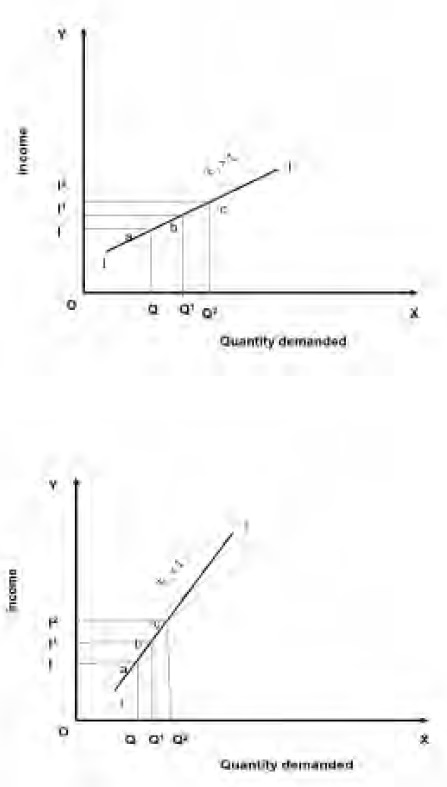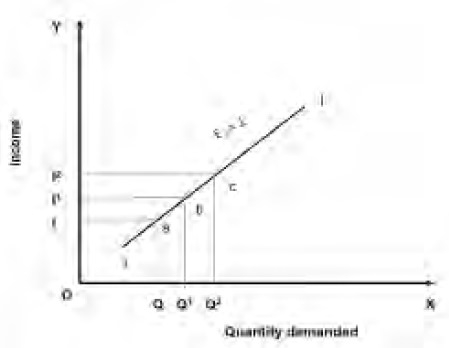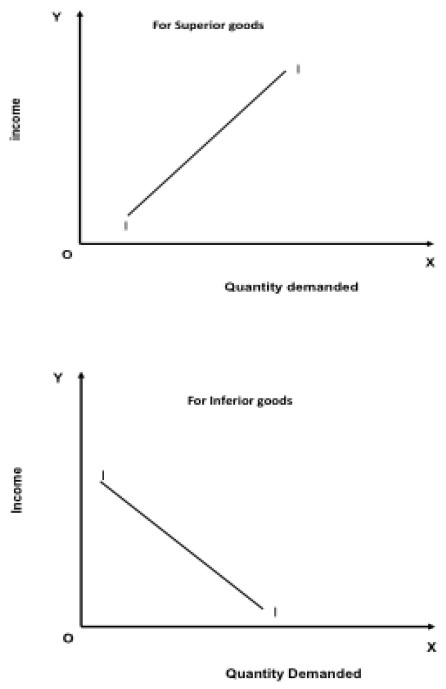Managerial Economics - Demand Analysis
Income Elasticity - Demand Analysis
Posted On :
Income elasticity of demand measures the responsiveness of quantity demanded to a change in income.
Income
Elasticity
Income elasticity of demand measures the responsiveness of quantity demanded to a change in income. It is measured by dividing the percentage change in quantity demanded by the percentage change in income. If the demand for a commodity increases by 20% when income increases by 10% then the income elasticity of that commodity is said to be positive and relatively high. If the demand for food were unchanged when income increases, the income elasticity would be zero. A fall in demand for a commodity when income rises results in a negative income elasticity of demand.
The following are the various types of income elasticity:
Zero Income Elasticity: The increase in income of the individual does not make any difference in the demand for that commodity. ( Ei = 0)
Negative Income Elasticity: The increase in the income of consumers leads to less purchase of those goods. ( Ei < 0).
Unitary Income Elasticity: The change in income leads to the same percentage of change in the demand for the good. ( Ei = 1).
Income Elasticity is Greater than 1: The change in income increases the demand for that commodity more than the change in the income. ( Ei > 1).
Income Elasticity is Less than 1: The change in income increases the demand for the commodity but at a lesser percentage than the change in the Income. ( Ei < 1).

The positive income elasticity of demand can be classified as unity, more than unity and less than unity. We can understand from the above graphs that the product which is highly elastic in nature will grow faster when the economy is expanding. The performance of firms having low income elasticity on the other hand will be less affected by the economic changes of the country.

With a rise in consumer’s income, the demand increases for superior goods and decreases for inferior goods and vice versa. The income elasticity of demand is positive for superior goods or normal goods and negative for inferior goods since a person may shift from inferior to superior goods with a rise in income.

Income elasticity of demand measures the responsiveness of quantity demanded to a change in income. It is measured by dividing the percentage change in quantity demanded by the percentage change in income. If the demand for a commodity increases by 20% when income increases by 10% then the income elasticity of that commodity is said to be positive and relatively high. If the demand for food were unchanged when income increases, the income elasticity would be zero. A fall in demand for a commodity when income rises results in a negative income elasticity of demand.
The following are the various types of income elasticity:
Zero Income Elasticity: The increase in income of the individual does not make any difference in the demand for that commodity. ( Ei = 0)
Negative Income Elasticity: The increase in the income of consumers leads to less purchase of those goods. ( Ei < 0).
Unitary Income Elasticity: The change in income leads to the same percentage of change in the demand for the good. ( Ei = 1).
Income Elasticity is Greater than 1: The change in income increases the demand for that commodity more than the change in the income. ( Ei > 1).
Income Elasticity is Less than 1: The change in income increases the demand for the commodity but at a lesser percentage than the change in the Income. ( Ei < 1).

The positive income elasticity of demand can be classified as unity, more than unity and less than unity. We can understand from the above graphs that the product which is highly elastic in nature will grow faster when the economy is expanding. The performance of firms having low income elasticity on the other hand will be less affected by the economic changes of the country.

With a rise in consumer’s income, the demand increases for superior goods and decreases for inferior goods and vice versa. The income elasticity of demand is positive for superior goods or normal goods and negative for inferior goods since a person may shift from inferior to superior goods with a rise in income.

Tags : Managerial Economics - Demand Analysis
Last 30 days 569 views












